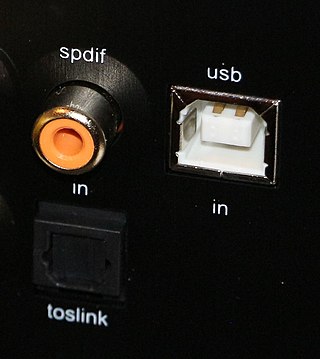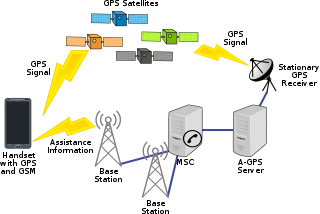
The Open Systems Interconnection (OSI) model is a reference model from the International Organization for Standardization (ISO) that "provides a common basis for the coordination of standards development for the purpose of systems interconnection." In the OSI reference model, the communications between systems are split into seven different abstraction layers: Physical, Data Link, Network, Transport, Session, Presentation, and Application.
The Real-time Transport Protocol (RTP) is a network protocol for delivering audio and video over IP networks. RTP is used in communication and entertainment systems that involve streaming media, such as telephony, video teleconference applications including WebRTC, television services and web-based push-to-talk features.
The Session Initiation Protocol (SIP) is a signaling protocol used for initiating, maintaining, and terminating communication sessions that include voice, video and messaging applications. SIP is used in Internet telephony, in private IP telephone systems, as well as mobile phone calling over LTE (VoLTE).
Voice over Internet Protocol (VoIP), also called IP telephony, is a method and group of technologies for voice calls for the delivery of voice communication sessions over Internet Protocol (IP) networks, such as the Internet.
The Skinny Client Control Protocol (SCCP) is a proprietary network terminal control protocol originally developed by Selsius Systems, which was acquired by Cisco Systems in 1998.
Signalling System No. 7 (SS7) is a set of telephony signaling protocols developed in the 1970s, which is used to set up and tear down telephone calls in most parts of the world-wide public switched telephone network (PSTN). The protocol also performs number translation, local number portability, prepaid billing, Short Message Service (SMS), and other services.

S/PDIF is a type of digital audio interface used in consumer audio equipment to output audio over relatively short distances. The signal is transmitted over either a coaxial cable using RCA or BNC connectors, or a fibre-optic cable using TOSLINK connectors. S/PDIF interconnects components in home theaters and other digital high-fidelity systems.
Network congestion in data networking and queueing theory is the reduced quality of service that occurs when a network node or link is carrying more data than it can handle. Typical effects include queueing delay, packet loss or the blocking of new connections. A consequence of congestion is that an incremental increase in offered load leads either only to a small increase or even a decrease in network throughput.
Connectionless-mode Network Service (CLNS) or simply Connectionless Network Service is an OSI network layer datagram service that does not require a circuit to be established before data is transmitted, and routes messages to their destinations independently of any other messages. As such it is a "best-effort" rather than a "reliable" delivery service. CLNS is not an Internet service, but provides capabilities in an OSI network environment similar to those provided by the Internet protocol suite. The service is specified in ISO/IEC 8348, the OSI Network Service Definition

A business telephone system is a telephone system typically used in business environments, encompassing the range of technology from the key telephone system (KTS) to the private branch exchange (PBX).

Assisted GNSS (A-GNSS) is a GNSS augmentation system that often significantly improves the startup performance—i.e., time-to-first-fix (TTFF)—of a global navigation satellite system (GNSS). A-GNSS works by providing the necessary data to the device via a radio network instead of the slow satellite link, essentially "warming up" the receiver for a fix. When applied to GPS, it is known as assisted GPS or augmented GPS. Other local names include A-GANSS for Galileo and A-Beidou for BeiDou.

A VoIP phone or IP phone uses voice over IP technologies for placing and transmitting telephone calls over an IP network, such as the Internet. This is in contrast to a standard phone which uses the traditional public switched telephone network (PSTN).

ITU-T Recommendation Q.931 is the ITU standard ISDN connection control signalling protocol, forming part of Digital Subscriber Signalling System No. 1. Unlike connectionless systems like UDP, ISDN is connection oriented and uses explicit signalling to manage call state: Q.931. Q.931 typically does not carry user data. Q.931 does not have a direct equivalent in the Internet Protocol stack, but can be compared to SIP. Q.931 does not provide flow control or perform retransmission, since the underlying layers are assumed to be reliable and the circuit-oriented nature of ISDN allocates bandwidth in fixed increments of 64 kbit/s. Amongst other things, Q.931 manages connection setup and breakdown. Like TCP, Q.931 documents both the protocol itself and a protocol state machine.

A computer network is a set of computers sharing resources located on or provided by network nodes. Computers use common communication protocols over digital interconnections to communicate with each other. These interconnections are made up of telecommunication network technologies based on physically wired, optical, and wireless radio-frequency methods that may be arranged in a variety of network topologies.

H.323 is a recommendation from the ITU Telecommunication Standardization Sector (ITU-T) that defines the protocols to provide audio-visual communication sessions on any packet network. The H.323 standard addresses call signaling and control, multimedia transport and control, and bandwidth control for point-to-point and multi-point conferences.
The Media Gateway Control Protocol (MGCP) is a telecommunication protocol for signaling and call control in hybrid voice over IP (VoIP) and traditional telecommunication systems. It implements the media gateway control protocol architecture for controlling media gateways connected to the public switched telephone network (PSTN). The media gateways provide conversion of traditional electronic media to the Internet Protocol (IP) network. The protocol is a successor to the Simple Gateway Control Protocol (SGCP), which was developed by Bellcore and Cisco, and the Internet Protocol Device Control (IPDC).
A communication protocol is a system of rules that allows two or more entities of a communications system to transmit information via any variation of a physical quantity. The protocol defines the rules, syntax, semantics, and synchronization of communication and possible error recovery methods. Protocols may be implemented by hardware, software, or a combination of both.
The Stream Control Transmission Protocol (SCTP) is a computer networking communications protocol in the transport layer of the Internet protocol suite. Originally intended for Signaling System 7 (SS7) message transport in telecommunication, the protocol provides the message-oriented feature of the User Datagram Protocol (UDP), while ensuring reliable, in-sequence transport of messages with congestion control like the Transmission Control Protocol (TCP). Unlike UDP and TCP, the protocol supports multihoming and redundant paths to increase resilience and reliability.

The media gateway control protocol architecture is a methodology of providing telecommunication services using decomposed multimedia gateways for transmitting telephone calls between an Internet Protocol network and traditional analog facilities of the public switched telephone network (PSTN). The architecture was originally defined in RFC 2805 and has been used in several prominent voice over IP (VoIP) protocol implementations, such as the Media Gateway Control Protocol (MGCP) and Megaco (H.248), both successors to the obsolete Simple Gateway Control Protocol (SGCP).








